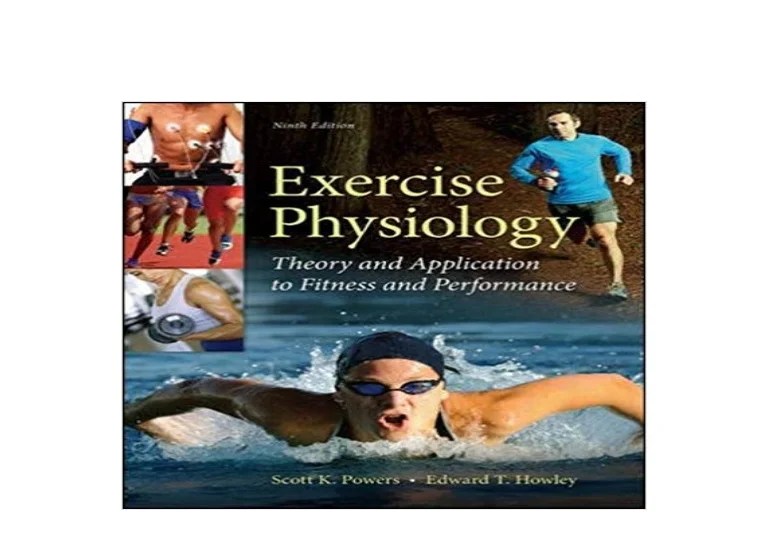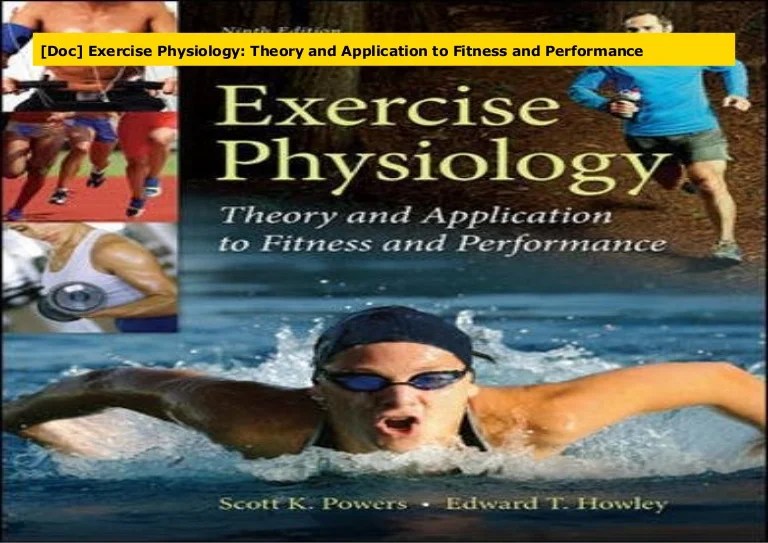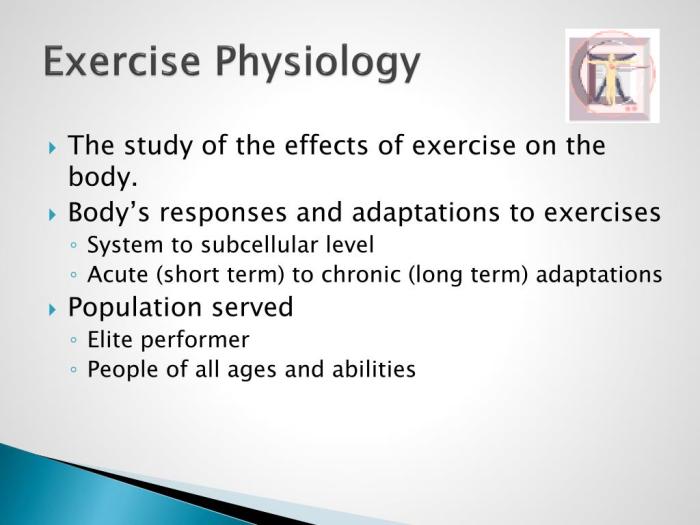Exercise Physiology Theory and Application to Fitness and Performance PDF: A Comprehensive Guide to Enhancing Human Performance, explores the scientific principles underlying exercise and their practical applications in optimizing fitness and athletic performance. This definitive resource empowers readers with a deep understanding of the physiological adaptations to exercise, energy systems, cardiovascular and respiratory systems, musculoskeletal system, neuromuscular control, and exercise prescription and programming.
By delving into this comprehensive guide, individuals can unlock the secrets of maximizing their physical potential and achieving their fitness goals.
Through a meticulous examination of the physiological responses to exercise, this guide unveils the intricate mechanisms that drive human movement and performance. It provides a roadmap for tailoring exercise programs to individual needs and goals, ensuring optimal results. Furthermore, it emphasizes the significance of monitoring and evaluation in tracking progress and refining training strategies.
This in-depth exploration empowers readers to make informed decisions about their fitness journey, leading to transformative outcomes.
Introduction: Exercise Physiology Theory And Application To Fitness And Performance Pdf
Exercise physiology is the study of the physiological responses and adaptations to physical activity and exercise. It provides a scientific understanding of how the body functions during exercise, and how these responses can be optimized to improve fitness and performance.
Understanding exercise physiology principles is essential for optimizing training programs and maximizing performance. It enables practitioners to tailor exercise interventions to individual needs and goals, ensuring safe and effective training.
Physiological Adaptations to Exercise

Exercise induces various physiological adaptations that enhance fitness and performance. These adaptations include:
- Increased muscle mass and strength
- Improved cardiovascular and respiratory function
- Enhanced metabolic efficiency
- Improved neuromuscular coordination
These adaptations are influenced by the type, intensity, duration, and frequency of exercise, as well as genetic factors.
Energy Systems and Metabolism

During exercise, different energy systems are utilized to provide fuel for muscle contractions. These systems include:
- Phosphocreatine system (immediate energy)
- Glycolytic system (anaerobic energy)
- Oxidative system (aerobic energy)
Metabolism is regulated during exercise to ensure adequate energy availability. Nutrition plays a crucial role in supporting energy production and recovery.
Cardiovascular and Respiratory Systems
Exercise triggers structural and functional adaptations in the cardiovascular and respiratory systems. These adaptations include:
- Increased heart size and stroke volume
- Enhanced blood vessel elasticity
- Increased lung capacity and oxygen uptake
These adaptations improve oxygen delivery and utilization during exercise, enhancing performance.
Musculoskeletal System
The musculoskeletal system provides the structural support and movement capabilities for exercise. Exercise can improve:
- Muscle strength and power
- Muscle endurance
- Flexibility
Enhanced musculoskeletal function reduces injury risk and improves performance.
Neuromuscular Control
The nervous system plays a crucial role in regulating muscle function during exercise. Exercise training induces adaptations in the neuromuscular system, including:
- Improved muscle recruitment
- Enhanced neural firing rates
- Increased motor unit synchronization
These adaptations optimize neuromuscular control, leading to improved performance.
Exercise Prescription and Programming
Exercise prescriptions should be tailored to individual fitness goals and needs. Key principles include:
- Exercise selection
- Intensity
- Duration
- Frequency
- Progression
Proper exercise programming ensures safe and effective training, maximizing results.
Monitoring and Evaluation

Regular monitoring and evaluation are essential for assessing progress and adjusting training programs. Methods include:
- Fitness tests
- Performance measures
- Subjective feedback
Data analysis helps optimize training interventions and ensures continued improvement.
FAQ Section
What is the primary focus of exercise physiology?
Exercise physiology primarily investigates the acute and chronic physiological responses to exercise and physical activity, with a specific emphasis on the mechanisms that underpin improvements in fitness and performance.
How does exercise physiology contribute to optimizing fitness and performance?
Exercise physiology provides a scientific framework for understanding how exercise affects the body, enabling practitioners to design and implement training programs that maximize fitness gains and enhance athletic performance.
What are the key physiological adaptations to exercise?
Exercise induces various physiological adaptations, including increased muscle mass and strength, improved cardiovascular function, enhanced respiratory capacity, and augmented energy metabolism, all of which contribute to improved fitness and performance.
How does exercise physiology inform exercise prescription and programming?
Exercise physiology provides the scientific basis for developing individualized exercise prescriptions that consider factors such as fitness goals, exercise history, and physiological capabilities, ensuring safe and effective training programs.
What is the role of monitoring and evaluation in exercise physiology?
Monitoring and evaluation are crucial in exercise physiology, as they allow practitioners to track progress, identify areas for improvement, and adjust training programs accordingly, maximizing the effectiveness and safety of exercise interventions.